5 books by Hurst, Erik
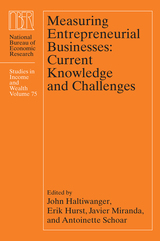
Measuring Entrepreneurial Businesses
Current Knowledge and Challenges
Edited by John Haltiwanger, Erik Hurst, Javier Miranda, and Antoinette Schoar
University of Chicago Press, 2017
Start-ups and other entrepreneurial ventures make a significant contribution to the US economy, particularly in the tech sector, where they comprise some of the largest and most influential companies. Yet for every high-profile, high-growth company like Apple, Facebook, Microsoft, and Google, many more fail. This enormous heterogeneity poses conceptual and measurement challenges for economists concerned with understanding their precise impact on economic growth.
Measuring Entrepreneurial Businesses brings together economists and data analysts to discuss the most recent research covering three broad themes. The first chapters isolate high- and low-performing entrepreneurial ventures and analyze their roles in creating jobs and driving innovation and productivity. The next chapters turn the focus on specific challenges entrepreneurs face and how they have varied over time, including over business cycles. The final chapters explore core measurement issues, with a focus on new data projects under development that may improve our understanding of this dynamic part of the economy.
Measuring Entrepreneurial Businesses brings together economists and data analysts to discuss the most recent research covering three broad themes. The first chapters isolate high- and low-performing entrepreneurial ventures and analyze their roles in creating jobs and driving innovation and productivity. The next chapters turn the focus on specific challenges entrepreneurs face and how they have varied over time, including over business cycles. The final chapters explore core measurement issues, with a focus on new data projects under development that may improve our understanding of this dynamic part of the economy.
[more]
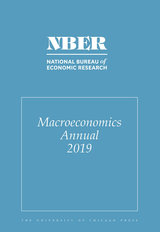
NBER Macroeconomics Annual 2019
Volume 34
Edited by Martin Eichenbaum, Erik Hurst, and Jonathan A. Parker
University of Chicago Press Journals, 2020
The thirty-fourth volume of the NBER Macroeconomics Annual features theoretical and empirical studies of issues in contemporary macroeconomics and a keynote address by James Stock, a member of President Obama’s Council of Economic Advisers from 2013 to 2014. Chong-en Bai, Chang-Tai Hsieh, and Zheng Song examine the “special deals” provided by Chinese local governments to favored private firms and their effects on economic growth. Matias Covarrubias, Germán Gutiérrez, and Thomas Philippon study the evolution of profits, investment, and market shares in US industries over the past forty years and find evidence of inefficient concentration and barriers to entry since 2000. David Debortoli, Jordi Galí, and Luca Gambetti assess whether recent economic performance was affected by a binding zero lower bound constraint on the interest rate. Michael McLeay and Silvana Tenreyro explain why it is difficult to empirically identify the Phillips curve (a key element of the policy framework used by central banks) using aggregate data. The authors suggest using regional variation in unemployment and inflation to estimate the relationship between these variables. Margherita Borella, Mariacristina De Nardi, and Fang Yang examine the effects of shorter life expectancies, higher medical expenses, and lower wages for white, non-college-educated Americans born in the 1960s on labor supply and retirement savings. Nir Jaimovich, Sergio Rebelo, Arlene Wong, and Miao Ben Zhang investigate the role that increases in the quality of the goods consumed (“trading up”) played in the rise of the skill premium that occurred in the last four decades.
[more]
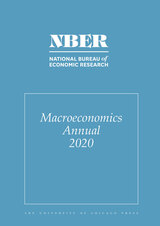
NBER Macroeconomics Annual 2020
Volume 35
Edited by Martin Eichenbaum and Erik Hurst
University of Chicago Press Journals, 2021
NBER Macroeconomics Annual 2020 presents research by leading scholars on central issues in contemporary macroeconomics. George-Marios Angeletos, Zhen Huo, and Karthik Sastry ask how to model expectations without rational expectations. They find that in response to business cycle shocks, expectations underreact initially but eventually overshoot, which in their view favors models with dispersed, noisy information and overextrapolation of expectations. Next, Esteban Rossi-Hansberg, Pierre-Daniel Sarte, and Nicholas Trachter contrast the patterns of rising aggregate firm market concentration with falling market concentration over time at the local level. Some associate rising concentration with less competition and more market power, but because most product markets are local, studying changes in local competition, as opposed to trends in aggregate competition, provides important insights. Adam Guren, Alisdair McKay, Emi Nakamura, and Jón Steinsson develop a novel econometric procedure to recover structural parameters using cross-region variation, for example, to estimate direct effects of housing wealth changes on individual household consumption. To avoid confounding direct and indirect effects, the authors isolate the direct effect of house price changes on consumption by using other estimates of demand multipliers from the local government spending literature to deflate estimates of the total effect of local consumption on local house prices. Peter Klenow and Huiyu Li examine the sources of reduced productivity growth by quantifying the contribution of innovation to economic growth. They find that young firms generate roughly half the productivity growth, most of the changes in productivity during the mid-1990s are accounted for by older firms, and most growth results from quality improvements on incumbents’ own products. In the fifth chapter, Fatih Guvenen, Greg Kaplan, and Jae Song use detailed micro panel data from the Social Security Administration to assess the progress women have made into the top 1% and top 0.1% of the income distribution over time. Finally, Joachim Hubmer, Per Krusell, and Anthony Smith Jr. explore the reasons for growing wealth inequality across the developed world. They argue that the significant drop in tax progressivity starting in the late 1970s was the most important source of growing wealth inequality in the United States. The sharp observed increases in earnings inequality and the falling labor share cannot account for the bulk of the increase in wealth inequality.
[more]
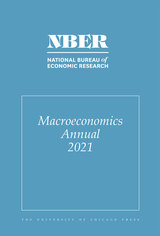
NBER Macroeconomics Annual 2021
Volume 36
Edited by Martin Eichenbaum and Erik Hurst
University of Chicago Press Journals, 2022
The NBER Macroeconomics Annual 2021 presents research-central issues in contemporary macroeconomics. Robert Hall and Marianna Kudlyak examine unemployment dynamics during economic recoveries. They present new empirical findings and explore models in which the labor market gradually draws down the stock of unemployed workers in the aftermath of a downturn. Titan Alon, Sena Coskun, Matthias Doepke, David Koll, and Michèle Tertilt analyze the relative decline in employment of women during the COVID-19 pandemic and the associated global recession. They show that increased childcare needs, which fell more heavily on women, and differences in occupations both contributed. In the case of the US, however, each of these factors account for less than 20% of the gender gap in hours worked during the pandemic. Richard Rogerson and Johanna Wallenius study the employment rates of older workers in OECD countries over the last forty years. An expansion of institutions incentivizing retirement, concurrent with negative aggregate shocks between 1970 and 1995, led to falling employment rates. This trend started to reverse in the mid-1990s when many of these institutions, such as public pension programs, were cut back. Michael Barnett, William Brock, and Lars Peter Hansen explore the consequences of risk, ambiguity, and model misspecification in climate policy design. They consider carbon emissions pricing and the effects of different sources of uncertainty—such as future information about environmental damage, uncertainties in carbon and temperature dynamics and damage functions, and the role of future green technologies—on policy design. Michael Kremer, Jack Willis, and Yang You present new evidence suggesting a steady trend toward income convergence across countries since the late 1980s. They find convergence in various determinants of economic growth across countries and a flattening of the relationship between growth and these determinants. The paper challenges theories of growth arising after earlier rejections of the neoclassical growth model.
[more]
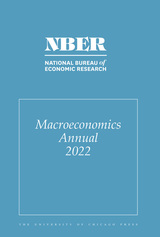
NBER Macroeconomics Annual, 2022
Volume 37
Edited by Martin Eichenbaum, Erik Hurst, and Valerie Ramey
University of Chicago Press Journals, 2023
Authoritative takes on the most current and pressing issues in macroeconomics today.
The NBER Macroeconomics Annual provides a forum for leading economists to participate in important debates in macroeconomics and to report on major developments in macroeconomic analysis and policy.
The NBER Macroeconomics Annual brings together leading scholars to discuss five research papers on central issues in contemporary macroeconomics. First, Andrea Eisfeldt, Antonio Falato, and Mindy Xiaolan document the rise of a new class of worker that receives part of its labor income as equity-based compensation, its role in the recent decline in the labor share of income, and implications for the returns to skilled labor and the implied capital-skill complementarity. Next, Michael Bauer and Eric Swanson focus on monetary policy shocks and argue the correlation between estimated monetary surprises and previously available information can be explained by uncertainty about the parameters of the monetary policy rule. Using new data and methods they find effects of monetary policy on macroeconomic variables that are much larger than previously estimated. Job Boerma and Loukas Karabarbounis provide a framework for quantitatively exploring the gap in wealth between White and Black Americans over the past 150 years and examine the effectiveness of reparations as a tool for closing this gap. Guido Menzio considers workers who do not have rational expectations, and whose “stubborn” beliefs change the response of wages to technology shocks, resulting in sticky wages. He finds that the larger the fraction of workers with stubborn beliefs, the more volatile unemployment is. Finally, Rishabh Aggarwal, Adrien Auclert, Matthew Rognlie, and Ludwig Straub investigate the growth—particularly in the United States—of private savings, current account deficits, and fiscal deficits after 2020. They argue that fiscal deficits lead to large and persistent increases in private savings and current account deficits.
The NBER Macroeconomics Annual provides a forum for leading economists to participate in important debates in macroeconomics and to report on major developments in macroeconomic analysis and policy.
The NBER Macroeconomics Annual brings together leading scholars to discuss five research papers on central issues in contemporary macroeconomics. First, Andrea Eisfeldt, Antonio Falato, and Mindy Xiaolan document the rise of a new class of worker that receives part of its labor income as equity-based compensation, its role in the recent decline in the labor share of income, and implications for the returns to skilled labor and the implied capital-skill complementarity. Next, Michael Bauer and Eric Swanson focus on monetary policy shocks and argue the correlation between estimated monetary surprises and previously available information can be explained by uncertainty about the parameters of the monetary policy rule. Using new data and methods they find effects of monetary policy on macroeconomic variables that are much larger than previously estimated. Job Boerma and Loukas Karabarbounis provide a framework for quantitatively exploring the gap in wealth between White and Black Americans over the past 150 years and examine the effectiveness of reparations as a tool for closing this gap. Guido Menzio considers workers who do not have rational expectations, and whose “stubborn” beliefs change the response of wages to technology shocks, resulting in sticky wages. He finds that the larger the fraction of workers with stubborn beliefs, the more volatile unemployment is. Finally, Rishabh Aggarwal, Adrien Auclert, Matthew Rognlie, and Ludwig Straub investigate the growth—particularly in the United States—of private savings, current account deficits, and fiscal deficits after 2020. They argue that fiscal deficits lead to large and persistent increases in private savings and current account deficits.
[more]
READERS
Browse our collection.
PUBLISHERS
See BiblioVault's publisher services.
STUDENT SERVICES
Files for college accessibility offices.
UChicago Accessibility Resources
home | accessibility | search | about | contact us
BiblioVault ® 2001 - 2024
The University of Chicago Press









